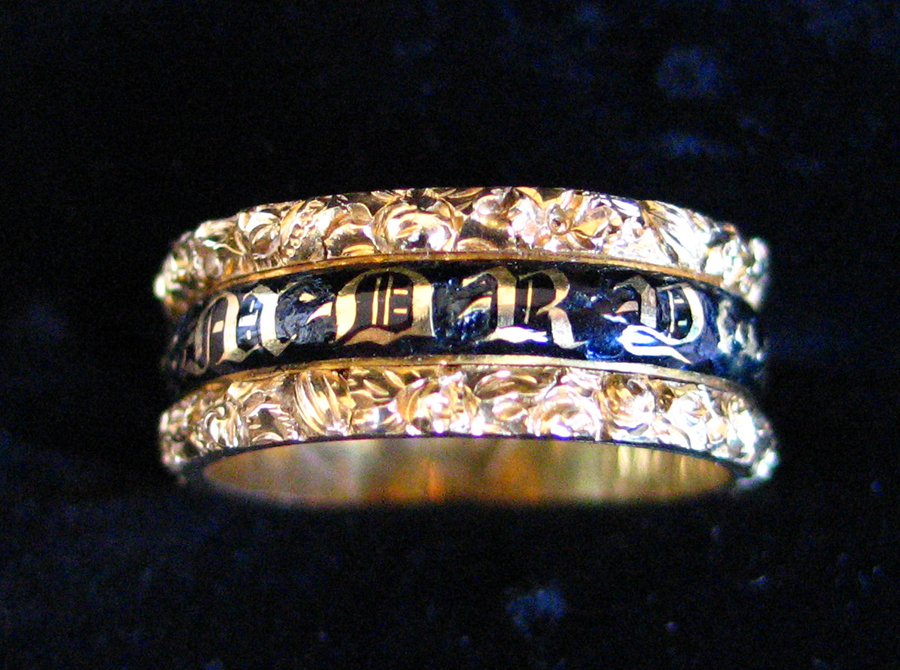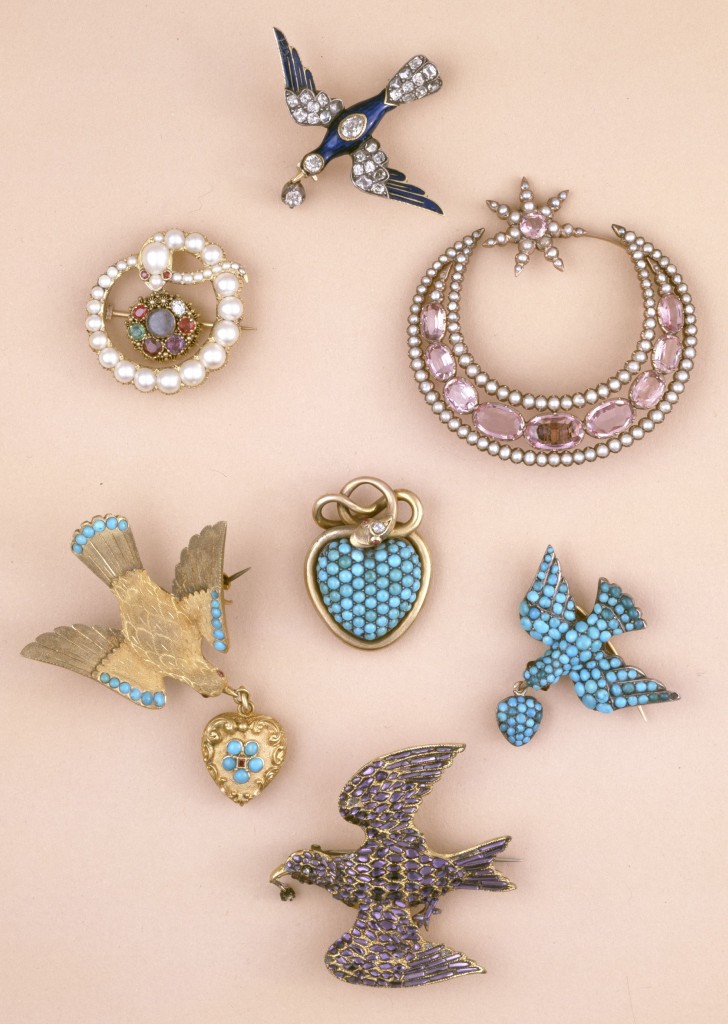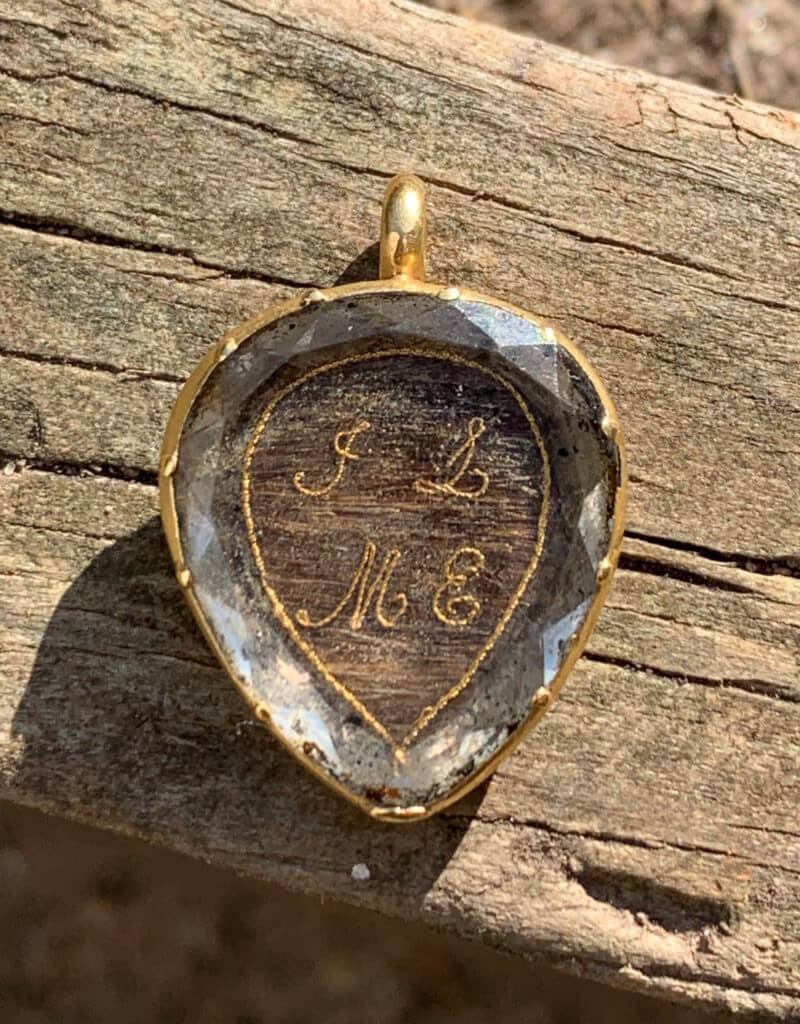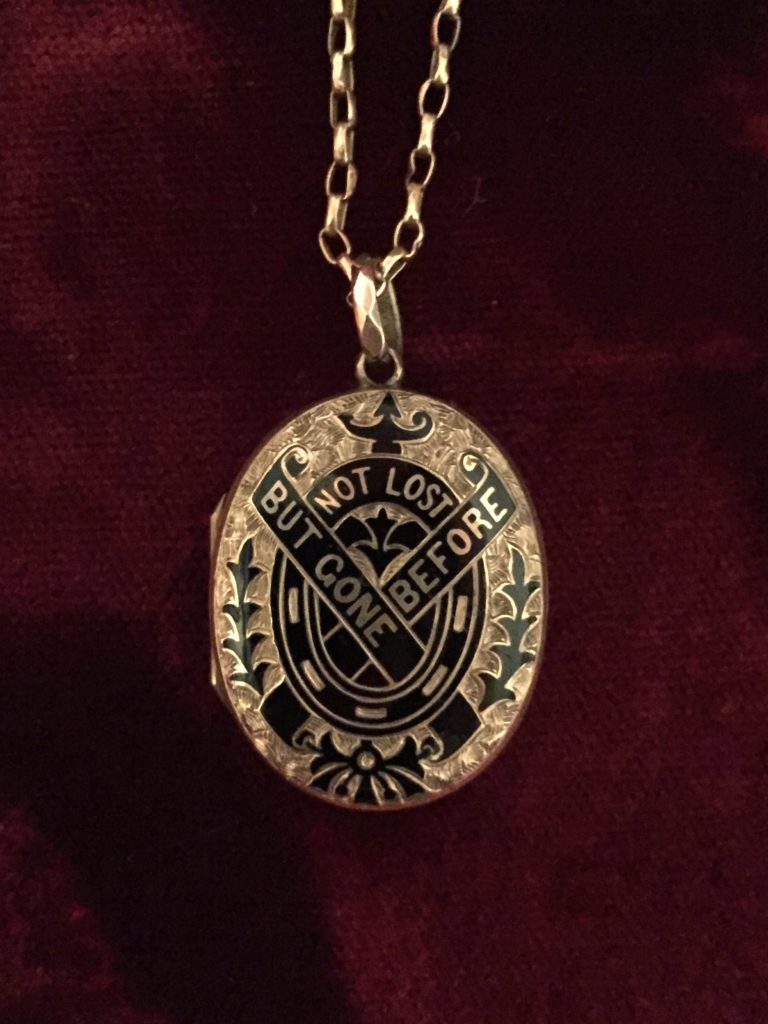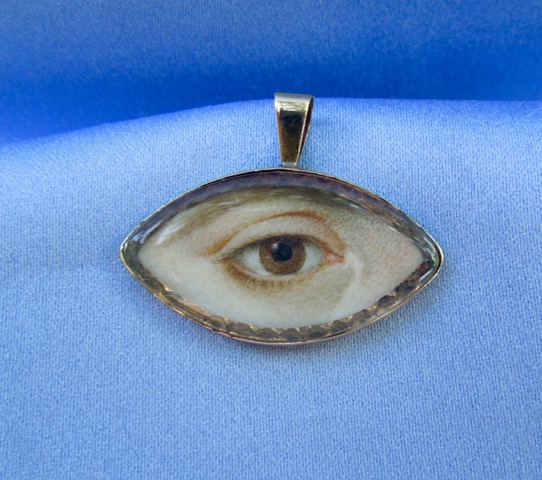French Saint Esprit Dove Necklace
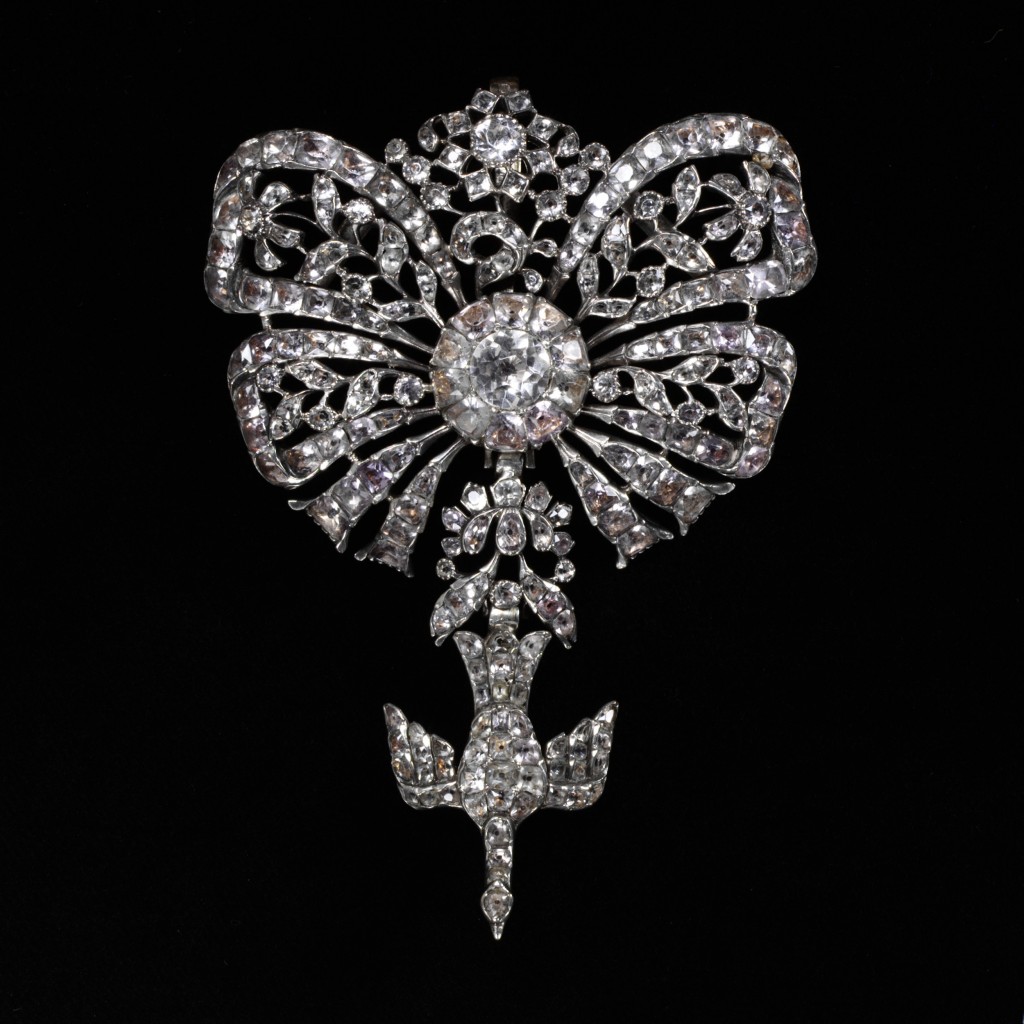
During the Rococo period of the 18th century, much of the most ornate and elaborate jewellery was created. Rococo as a popular style began c.1730 in Paris and flourished well into the 1780s, built upon the skills of master jewellers from Spain to Russia. Access to gems was another reason why the style was so popular, as a new source of diamonds was found in Brazil c.1720 (Brazil was then a Portuguese colony), after the Indian mines were exhausted c.1700. This dropped the price of diamonds in Europe, leading to a high quantity of elaborately embellished diamond jewellery. Diamonds were prevalent enough to be used as white stones, set on coloured foil, which worked well with romantic naturalism to create jewellery that resembled flowers and bows. Notably, the Giardinetti rings, meaning ‘little garden’, commonly displayed the flowers and vase in gems.
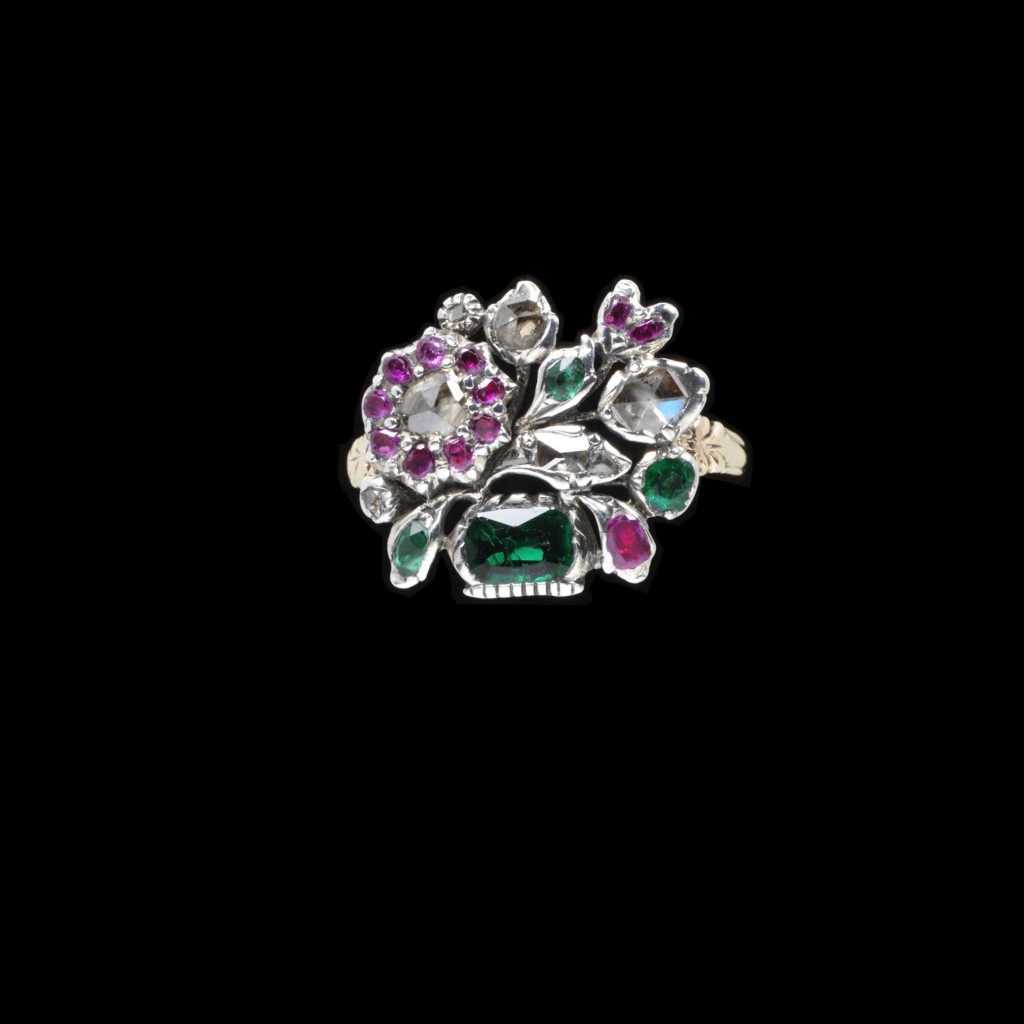
In today’s necklace, the usage of the dove, representing the Christian Holy Ghost, is a common symbol found in jewels of the 18th and 19th century. Otherwise known at the Saint Esprit dove, this symbol crosses both Catholic and Protestant symbolism due to its unbiased Christian representation. It can be worn by Protestants without any clear definition of official symbolism, but it still recognisable as being a Christian symbol. In the representation of the dove in flight within jewellery, its history is related to faith.
Two basic representations of this cross exist; one with the Maltese Cross and a phial, the other with the cross and the dove below. Connection with the dove in flight originated from the Cross of Malta, as Henry III founded the Order of the Knights of the Holy Spirit on December 31st, 1578. The appropriated symbol was the Cross of Malta, hanging from a blue ribbon and having a dove in the centre with the slogan “By the Head and by the Spirit”. Huguenots adapted this after the Order of the Holy Spirit insignia worn by Henry IV (King of France and Navarra), who protected the Protestants through the Edict of Nantes in 1598. When this protectionist act was repealed, mass emigration to England of talented jewellers which changed the jewellery industry in the 17th century.

In 1686, the revocation of the Edict of Nantes led to Huguenot goldsmiths and jewellers emigrating to Great Britain. This was when the previous allowance by Henry IV provided Calvinist Protestants (Huguenots) significant rights. With this retraction, the Huguenots bought with them skills which enabled the London trade to compete with Paris. This led to greater patronage with the influx of greater designs and new elements of fashion appearing as popular in jewels. By the mid 18th century, much of the values that were carried to Britain were instilled within the new industry and led to such elements as the Rococo designs in jewellery from its continental influence.
As such, the Huguenot Cross is a splendid symbol to be seen in the Rococo period, with an open four-petal Lily of France, symbolising the Four Gospels, which have rounded corners signifying the Eight Beatitudes. Joined together by the fleur-de-lis, representing France, the combination of four fleur-de-lis signify the Twelve Apostles.
How that relates to this necklace is seen in the Rocco embellishments. There is not one element of this necklace that does not resonate its time. The Rococo style never left fashion, but was utilised by its successors. Rococo had essentially appropriated the Baroque style, adding a natural flavour to the Baroque’s dominant and powerful use of floral trappings. Note the use of the acanthus along the border creating a scroll that encapsulates the interior stippled detail. The acanthus was a staple of Greek architecture and art, adopted by the Romans, carried through Byzantine architecture and revived for the Romanesque movement. Acanthus leaves are prevalent in Medieval manuscripts and wood carvings as decoration.
When it comes to funerary art, the acanthus symbolises the heavenly garden. It is one of the oldest cemetery motifs, acanthus is associated with the rock ground where most ancient Greek cemeteries were placed.
As can be seen in the necklace of this article, Revival periods of the 19th century adapted the acanthus through art, as it was a symbol which did not challenge religion through a humanist perspective. It is a form of embellishment that could be translated in gold to frame almost any style in between. The more stolid Gothic Revival of the early 19th century (c.1830-50) even had the acanthus used as a motif (though quite a lot smaller). It was used during the original Gothic period in one manner or another, so for as long as there has been a mourning industry, this design has made appearances. In the Neoclassical Period, it was used less in gold work and more in the painted symbolism, yet it existed in continuity from Baroque and Rococo. For the early 19th century Regency era, it was used less so, as cleaner, straight lines ruled the day, but when there was cross-pollination with the Rococo period of the 1740s (styles were never killed off completely), yet the Gothic Revival and its values of bringing society back into the realm of simplicity and Christian values resurrected the acanthus.
Emerald & Paste

Gems had a message which still continue today. As aforementioned; diamonds in the 18th century were often foiled to radiate other colours, rather than put the value of the diamond itself and its shining facets. These colours have a symbolic value. In the case of this necklace, the central element is its green gem, as it radiates all its other symbolic values. The value relates to the emerald, be it foiled or not. Belonging to the gem species beryl (which contains aquamarine, golden beryl and morganite), emeralds are found on their own, rather than the others of the family which are mined. Fine stones are step-cut (also emerald cut), small stones are brilliant cut and lesser stones cut en cabochon. While widely mined in history (Egypt, Columbia, Brazil), the most popular are the Russian Ural Mountains since 1830, Australia from 1890 and South Africa from 1920. Known to fracture, emeralds should be scrutinised, as flawless (or ‘clean’) emeralds may be synthetic. Their magical properties are through to be ‘unlucky’.
Fashion
It cannot be understated how important the French influence upon sentimental jewels was in the turn of the 19th century. From the souvenir jewels stating such terms as “Souvenir d’amitié” and “Souvenir d’armour”, the statements of love that were worn on display created a new social proprietary that involved the use of sentimental jewels to offer admired people, within social circles, as signs of courtship and love.
Much of this sentiment stemmed from the French Revolution and its cultural challenge to established monarchy and religious value systems, particularly in the form of Liberté, égalité, fraternité (liberty, equality and fraternity). While the French Restoration of the first-quarter 19th century had repaired the monarchy itself, the challenge to established order had accomplished a lot to put new values in relationships and empower individuals. George IV encouraged society to look externally for artistic influence, since his ascendancy (and Regency, post Regency Act of 1811), George’s investment in the arts was required for the aristocracy to have these tokens of love as social requirements above simple affectations.
The Bourbons were restored in 1814, with jewels being more sedate in their designs due to the lack of wealth. Threaded seed pearl on horse hair created ornate bracelets and necklaces, with materials being smaller and more abundant to exaggerate their use. During the 1820s and 1830s, the use of cannetille (surface covered with wire) or grainti (small granules) embellished the colour of gemstones, as the gold was used in the base of the jewel. As seen with the portrait of Lady Peel by Sir Thomas Lawrence above, the wearing of several bracelets and enamelled rings on one finger elaborately exaggerated the colour of the jewellery. Classical style was starting to become overcome with elements of the Baroque and Rococo, which had only been popular previous to the Neoclassical period.
How this affected the mind of the early 19th century individual was a direct stylistic move away from what had bought about the unrest of the Neoclassical style. With competing styles being mixed for mainstream appeal, the classical style in its literal form would recede until the mid 19th century and the archaeological discoveries that would ignite it once more, such as Etruscan.
In the early 19th century, there was much to define the self through the identity of jewels. Neoclassical allegory had put the focus back upon the elements of the natural world which could contain their own symbolism. The dove, as given by a loved one to a betrothed or one who wore it in society, was seen as pious and also sentimentally fashionable; being loved and still within the boundaries of a specific fashion. Fashion and its representation in the 1800-1820 period saw a great deal of refinement and change, much due to the access to gems and precious metals that coincided with the Napoleonic War, post-Terror period and colonialism that could bring in gems, such as diamonds, to Europe. Neoclassicism adapted and society utilised the acanthus and dove symbolism seen in today’s focal jewel, which would last into the latter 19th century.
Offering

This remarkable necklace shows so many values of its time. There is not one element that locks it into a certain type of sentimentality; it could be worn for fashion, love or remembrance. This is the quality of the jewel and one which was conveyed perfectly through the French balance of Catholicism and Protestantism. In the 19th century, this style would continue to resonate, surviving the Gothic Revival and last as a combined series of fashionable elements to even today.




